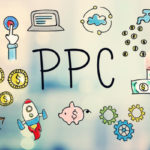Writing advertising copy can be a tricky business. We’d all like to think that we have the advertising erudition of Dan Draper combined with Shakespeare’s literary gifts. That we can bang out slogans and headlines and advert copy in the blink of an eye. The simple truth is most of us can’t. That’s not to say that you can’t give it a go yourself. All you need to do is follow the simple tips we’ve put together below and stay realistic; average response rates to advertisements are below 3%.
- Above all, advertising copy must be concise. Sentences should be short and sharp. Just write enough to make your point. Don’t jam advertising copy full of poetic prose more suited to a sonnet. And keep convoluted jargon for your next academic treatise. Impress the audience with the benefits of your products and services, rather than your flair for the English language. Keep your audience interested, and wanting to find out more about your product or service.
- Write for your reader. Work out who your audience is and tailor advertising copy to suit their needs. Teenagers will respond to casual language and slang. Octogenarians tend to prefer more formal prose.
- Empathise with your audience. Put yourself in their shoes. Work out their wants and needs and demonstrate how your product or service will fill the void in their lives. With today’s increasingly fast-paced lifestyle, consumers value time and money above all else. Show how your product or service can save them on both fronts.
- Structure advertising copy the same way you would structure a story. Give it a beginning, a middle and an end. Think of the headline like an introduction, then spell out the problem they have. Tell them how you can solve this problem. Sum up by telling them where or how to get a hold of your products or services.
- Stick to one message. And reiterate it constantly. Don’t bombard your audience with multiple calls to action in the same document. It will only confuse them. If you have multiple messages, communicate them via multiple channels or multiple documents.
- Use proper English and correct grammar. Every word processing program comes with an in-built dictionary and thesaurus. Use them. And always, always, always proofread advertising copy before it’s published. Sloppy copy will leave potential customers wondering if you know what you’re talking about.
- Don’t use clichés. They are boring and overused. Clichés completely detract from the impact of otherwise influential advertising copy. Your more savvy potential customers definitely won’t appreciate the inclusion of tired banalities.
- Come up with a strong headline. You need to catch the eye of potential customers. Give them a reason to keep reading. You have to come up with the slogan of the century, just get their attention any way you can. A good way to do this is to elicit an emotional response. Compare ‘Writing Advertising Copy’ to ‘Imagine Boosting Your Sales with Compelling Copy’. Which are you more likely to read?
- Include the how. This may seem obvious, but you would be surprised how often this is omitted from advertising copy. Make sure you indicate how customers can purchase your products or services. Include a website address, or stockists or a phone number or all of the above.
- If you are still having trouble getting started, do some research. See how your competitors phrase their advertising copy. Think more broadly and read marketing material produced by some of the world’s most successful brands (McDonald’s, Apple, IBM). Like anything, the more you familiarise yourself with a topic, the easier it will become.
Thanks Sally for sharing these great top tips for writing effective advertising copy.
About Sally Wood
Having worked in marketing, communications and public relations roles for over ten years, Sally’s past life includes a plethora of activities, some of which even she can’t believe she was lucky enough to try her hand at. There was the development and implementation of internal communication programs for burly construction contractors; PR campaigns to launch The Simpson’s products (which just happened to involve carting life-sized Simpson figures around the country); people (and media) wrangling at Flemington’s birdcage for high-profile clients during the Melbourne Cup Carnival; CSR program design, implementation and GRI-accredited reporting; and, most recently, copywriting and internal stakeholder relations in a most serious corporate environment. Somehow, in the midst of all that, she also managed to get stuck into some study, undertaking a Bachelor of Arts / Law, completing a Postgraduate Bachelor of Letters in Public Relations and Journalism and recently starting an MBA.
Sally Wood
Latest posts by Sally Wood (see all)
- 6 Free Marketing Plan Templates - July 22, 2018
- The Ultimate Guide to Instagram Advertising - June 23, 2018
- Q&A with Amy Cockerell, Marketing Coordinator at the TAC - October 6, 2016








